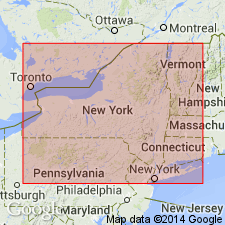
- Usage in publication:
-
- Tichenor limestone
- Modifications:
-
- First used
- AAPG geologic province:
-
- Appalachian basin
Summary:
Tichenor limestone in Ontario Co. used as part of the succession of Hamilton beds. Overlies Moscow shale and underlies Canandaigua (Ludlowville) shale.
Source: GNU records (USGS DDS-6; Reston GNULEX).
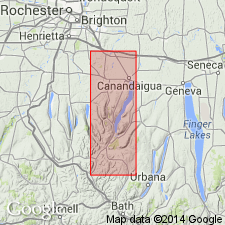
- Usage in publication:
-
- Tichenor limestone
- Modifications:
-
- Named
- Dominant lithology:
-
- Limestone
- AAPG geologic province:
-
- Appalachian basin
Summary:
Tichenor limestone in Canandaigua and Naples quads consists of 1 ft of compact, hard, bluish-gray, often crinoidal limestone, commonly known as Encrinal limestone. Well exposed at Tichenor Point on Canandaigua Lake, Ontario Co., central NY. Underlies Moscow shale; overlies Canandaigua shale. Age is Middle Devonian.
Source: GNU records (USGS DDS-6; Reston GNULEX).
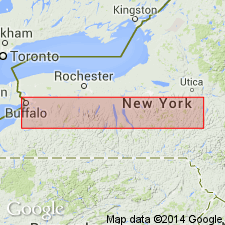
- Usage in publication:
-
- Tichenor member
- Modifications:
-
- Revised
- AAPG geologic province:
-
- Appalachian basin
Summary:
Revised the Tichenor to a member. The one foot thick bed of limestone at Tichenor type section when traced westward becomes one of a group of several layers of same lithic character and containing a definite fauna, which is a recurrence of that of Centerfield limestone. These crinoidal limestones and the associated shales contain same fauna as type Tichenor and the 10 feet of shale below. It is proposed to unite the 10 feet of shale with the 1 foot crinoidal bed at Tichenor Point, under the name Tichenor, and to apply this name to these limestones and associated shales as far west as Lake Erie.
Source: GNU records (USGS DDS-6; Reston GNULEX).
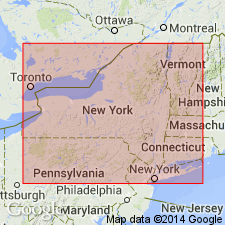
- Usage in publication:
-
- Tichenor limestone member
- Modifications:
-
- Revised
- AAPG geologic province:
-
- Appalachian basin
Summary:
Included Tichenor limestone in Ludlowville shale. It lies 50 to 75 ft below Menteth limestone in Ontario Co., NY, but in Erie Co., the Menteth limestone rests on Tichenor limestone.
Source: GNU records (USGS DDS-6; Reston GNULEX).
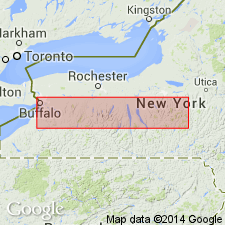
- Usage in publication:
-
- Tichenor Limestone Member
- Modifications:
-
- Revised
- AAPG geologic province:
-
- Appalachian basin
Summary:
Placed the Tichenor Limestone Member in the Moscow Formation of the Hamilton Group instead of the Ludlowville Formation. Overlies Wanakah-King Ferry Members; underlies Deep Run Shale Member.
Source: GNU records (USGS DDS-6; Reston GNULEX).
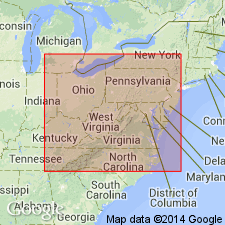
- Usage in publication:
-
- Tichenor Limestone Member*
- Modifications:
-
- Areal extent
- AAPG geologic province:
-
- Appalachian basin
Summary:
Tichenor Limestone Member of Ludlowville Shale reassigned as basal Member of Moscow Shale in PA and NY, based on Baird (1979). Portland Point Limestone Member at base north of Ithaca. Tichenor Limestone Member extended from southwestern NY into western PA and into subsurface in northern WV and westernmost MD (Garrett Co.).
Source: GNU records (USGS DDS-6; Reston GNULEX).
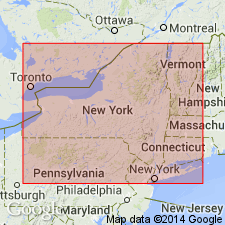
- Usage in publication:
-
- Tichenor Limestone Member
- Modifications:
-
- Overview
- AAPG geologic province:
-
- Appalachian basin
Summary:
In west-central NY, Tichenor Limestone Member of the Moscow Formation is a 1- to 2-ft-thick compact limestone bed. From Erie to Livingston Cos., consists of coarse crinoidal skeletal grainstone, but eastward near Canandaigua Lake, unit thickens and becomes finer-grained, represented by a styliolinid and crinoidal packstone. Represents the first transgressive limestone of the Moscow sequences. It disconformably overlies various members of the Ludlowville Formation. Upper contact is relatively abrupt in most localities where it underlies the Menteth Limestone Member, but is gradational and conformable with the Deep Run Member. Age is Middle Devonian (Givetian).
Source: GNU records (USGS DDS-6; Reston GNULEX).
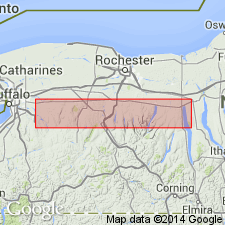
- Usage in publication:
-
- Tichenor Limestone Member*
- Modifications:
-
- Overview
- AAPG geologic province:
-
- Appalachian basin
Summary:
Author follows usage of Baird (1979), who reassigns Tichenor Limestone Member and Deep Run Shale Member from Ludlowville Formation to Moscow Formation, both of Hamilton Group. Age is Middle Devonian.
Source: GNU records (USGS DDS-6; Reston GNULEX).
For more information, please contact Nancy Stamm, Geologic Names Committee Secretary.
Asterisk (*) indicates published by U.S. Geological Survey authors.
"No current usage" (†) implies that a name has been abandoned or has fallen into disuse. Former usage and, if known, replacement name given in parentheses ( ).
Slash (/) indicates name conflicts with nomenclatural guidelines (CSN, 1933; ACSN, 1961, 1970; NACSN, 1983, 2005, 2021). May be explained within brackets ([ ]).

